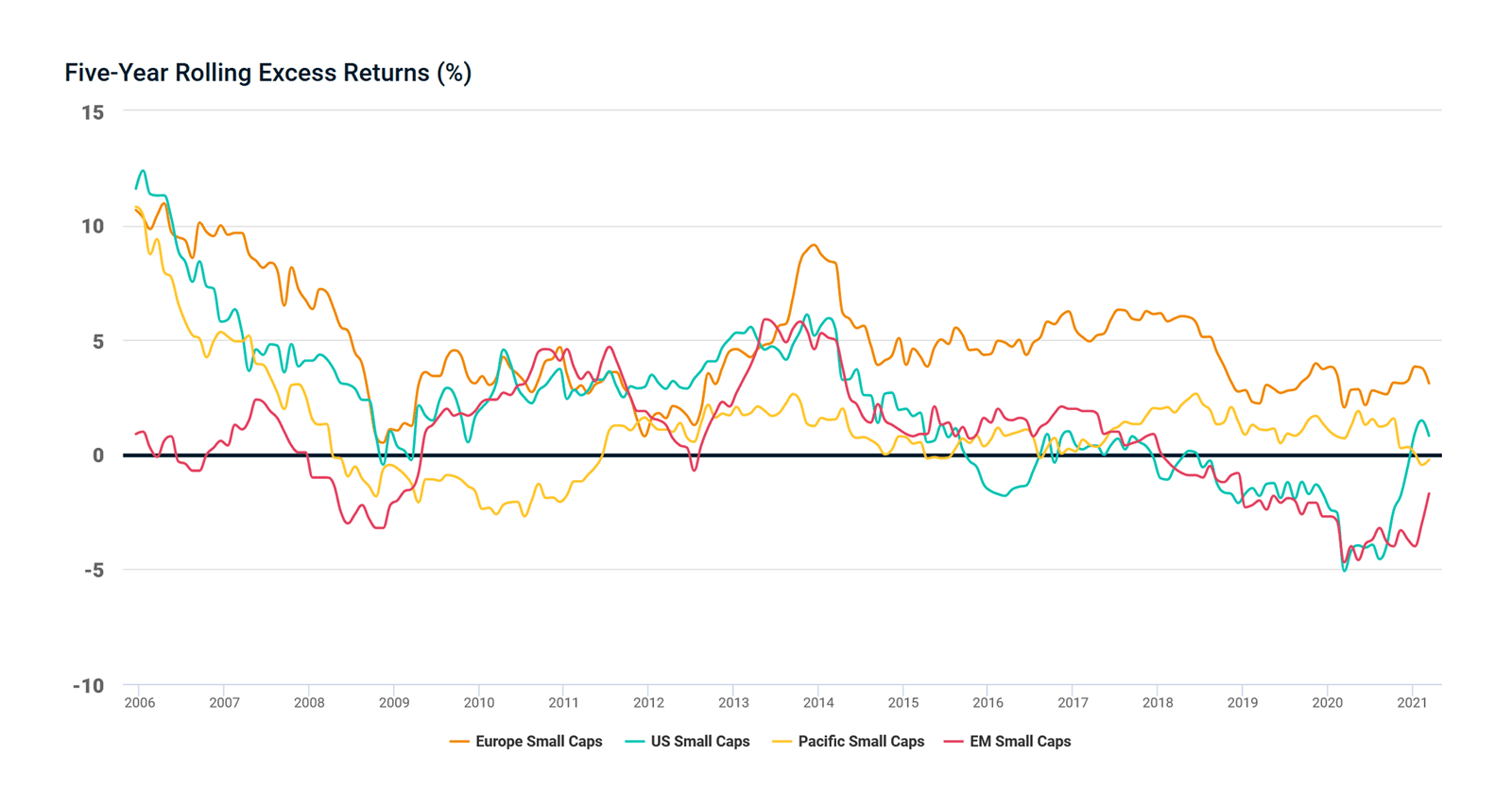Revisiting Small Caps
As the world economy starts to feel the benefits of COVID-19 vaccines, some investors have started to revisit the role of small-cap stocks in their portfolios. Traditionally seen as riskier than mid- and large-cap stocks, small caps have historically been more sensitive to a benign economic backdrop.
Over the one-year period ended March 31, 2021, all major regional MSCI indexes underperformed their small-capitalization counterparts, with the exception of emerging markets. We saw the greatest outperformance in the U.S. where the MSCI USA Small Cap Index outperformed the MSCI USA Index by 35.8%. This strong performance of U.S. small caps comes on the back of a gradual re-opening of the economy and extensive vaccination program.
As of that same date, the MSCI's adaptive multi-factor model showed a continued overweight of the low-size factor, as well as value.
If we take a longer view, as shown in the chart below, we find that on a five-year rolling basis, over the last 20 years, the small-cap regional indexes outperformed the large- and mid-cap indexes most of the time.1

The chart shows the excess return of each regional small-cap index vs. its parent index.
Subscribe todayto have insights delivered to your inbox.
Global Investing Trends
Investing globally can help investors work toward global diversification, tap into new opportunities for growth and harness the potential in the rise in importance of emerging markets.
Factors in Focus: Value Springs into Action
The performance of asset selection based on value descriptors has been pervasive across regions and uniformly across a majority of sectors.
Index Performance in Changing Economic Environments
Over the recent years, the impact of the macroeconomic regime on their investments has grown in importance for institutional investors.
1 Past performance — whether actual, backtested or simulated — is no indication or guarantee of future performance.
The content of this page is for informational purposes only and is intended for institutional professionals with the analytical resources and tools necessary to interpret any performance information. Nothing herein is intended to recommend any product, tool or service. For all references to laws, rules or regulations, please note that the information is provided “as is” and does not constitute legal advice or any binding interpretation. Any approach to comply with regulatory or policy initiatives should be discussed with your own legal counsel and/or the relevant competent authority, as needed.

